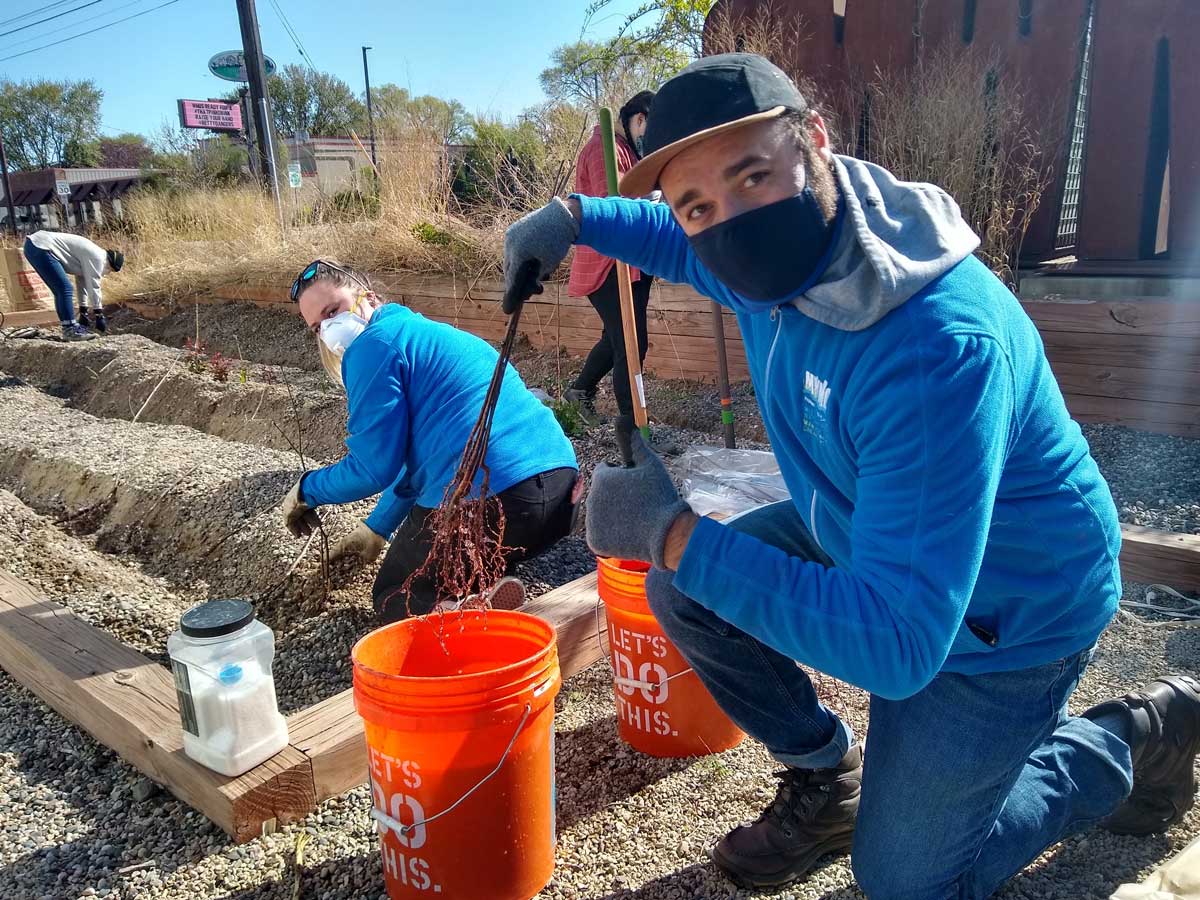Growing diversity for climate resiliency in Minneapolis riverfront forests
On a sunny Friday in early May, staff from FMR and the Mississippi Watershed Management Organization (MWMO) gathered at the MWMO office in Northeast Minneapolis. Outfitted with facemasks and each person's own gloves and shovel, we approached the morning's task with the zeal of people who'd been cooped up at home for the last six weeks. We were also excited to take our first step in this year's round of climate-adapted restoration tasks at FMR's Minneapolis restoration sites planting bare-root trees in a gravel bed.
In partnership with the Minneapolis Park and Recreation Board and the MWMO, FMR is restoring forests at two river-adjacent Minneapolis sites: Nicollet Island and Mississippi River Gorge Regional Park. At each, we're removing invasive plant species, diversifying native vegetation and improving the resiliency of the forests through climate-adapted plantings.
This is where the gravel beds come in.
Growing resiliency
Since 2018, funder and project partner MWMO has hosted a gravel bed where FMR can plant bare-root trees in the spring then harvest them in early fall to plant at our restoration sites. (Why gravel beds? Check out the video below.)
Each year, we plant trees predicted to do well as Minnesota's climate warms.
This includes species that may not be native to our metro riverfront — such as swamp white oak, Kentucky coffeetree, and bitternut hickory — but that are common in more southerly Minnesota counties. We also plant "near-natives" like American sycamore and Ohio buckeye, trees native to Iowa and Wisconsin but already naturalized here in Minnesota.
By adding these species into our riverfront canopy, we can keep our riverfront forests healthy. If one species wanes under increasing temperatures or other climatic stress, its neighbors can fill in the gap it leaves behind, rather than those gaps filling with weedy or invasive species.
The mix of plant species in a diverse community decreases its chances of collapse and preserves the benefits that forests provide well into the future.
To learn more about why we plant bare-root trees into a gravel bed, and to see the project in action, check out the video below! And to plant trees and steward our restorations for resiliency at these and other sites, email FMR Volunteer and Outreach Coordinator Sophie Downey at volunteer@fmr.org.
